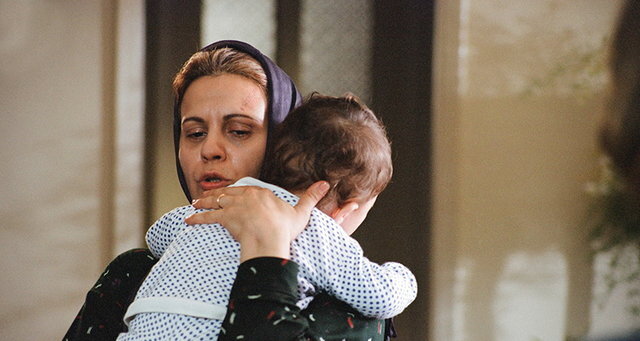Remembering Nakba: cinematic stories of displacement, hope

TEHRAN – Since 1948, when the United Nations officially recognized the state of Israel, the issue of land seizure and the displacement of Palestinian inhabitants has remained a central and tragic theme.
Over the past seventy-seven years, this ongoing catastrophe—known as the Nakba—has inspired countless works of literature, art, and film aimed at remembering and raising awareness about the Palestinian struggle.
Many remain unaware of the true depth of what happened to Palestine starting from 1948. It is often mistakenly believed that the tragedy only began on October 7, 2023, or in recent escalations. But the roots of this suffering stretch back to 1948—the year of the Nakba, a defining moment of dispossession and exile that set the stage for decades of resistance and resilience.
Despite the many media outlets addressing this history, art and storytelling often have a deeper emotional impact—evoking feelings and reflection that news reports alone cannot achieve.
In this context, films—especially narrative cinema—have a unique power to humanize this history. They create emotional connections, offering viewers a visceral experience of loss, displacement, and hope. Yet, surprisingly few films directly tackle the Palestinian Nakba. Most are produced outside Palestine, in neighboring countries, due to restrictions, censorship, and the complex political landscape that prevent filming within the occupied territories.
Among these rare films, Iranian director Seifollah Dad’s 1995 prominent drama “The Survivor” stands out as a compelling portrayal of the Palestinian experience. It vividly captures the emotional and human toll of displacement, making the suffering accessible and personal.
“The Survivor” is notable for being one of the few films explicitly about the Nakba. It tells a deeply personal story, focusing on the emotional scars and memories of Palestinians who endured the catastrophe. What makes “The Survivor” particularly compelling is its approach to art and storytelling as acts of remembrance. The film becomes a form of resistance, a way to keep alive the memory of the Nakba in a world where mainstream Western media often neglect or marginalize this history.
It is not merely a documentary but a storytelling effort that aims to humanize the abstract concept of displacement. It underscores how art and literature serve as vital tools in memorializing struggles, fostering collective identity, and ensuring that the stories of those displaced are not erased.
The film is based on Palestinian author Ghassan Kanafani’s novel “Returning to Haifa”. The narrative is set against the backdrop of the 1948 events when Zionist militias, under the leadership of figures like Shimon (a character representing Israeli military authority), began forcibly evicting Palestinian residents from their homes.
The narrative follows a Palestinian doctor, his wife, and their newborn son Farhan. On the day of the invasion, the doctor is at work caring for patients, while his wife tends to their home and baby. As violence escalates, the family’s struggle for survival begins. The wife and husband attempt to reunite, but in the chaos, they are killed by Zionist forces outside their home. Their young son is left behind, captured and handed over to an Israeli couple, with Shimon overseeing the transfer—highlighting the systematic dispossession inflicted upon Palestinian families.
The doctor’s mother, upon learning of his son’s death, approaches the Zionist family to care for Farhan. She takes a job as a nanny in the former home of her son—now occupied by the Zionists. Meanwhile, the doctor’s father secretly forms a group to oppose the Zionists. Ultimately, when Zionists plan to go to another city to carry out a massacre, the doctor’s mother places a bomb suitcase, given to her by her husband, on a train. Holding Farhan in her arms, she jumps off the train as it explodes. The film concludes with images of her wounded figure and the crying Farhan.
Dad’s "The Survivor" masterfully depicts what is happening to Palestine, conveying the ongoing tragedy not through visual spectacle but by imprinting it deeply into the viewer’s mind. The film symbolizes the loss of the educated doctor’s role in society, replaced by a helpless, defeated man —one who has no choice but being a part of the occupation. The angelic mother of Farhan is replaced by an exploitative woman. Yet, what remains constant are the figures of the doctor’s mother and Farhan—symbols of homeland and hope.
Through symbolic imagery, the director powerfully communicates the suffering inflicted upon the oppressed Palestinians. The climax of this artistry is a scene where the doctor and his wife are murdered by Zionists in front of their house. They fall onto the ground, as if lying in a bed, but their bed is the soil of Palestine—blood spilling from their bodies onto this land. Doctor’s mother, symbolizing the motherland, sacrifices herself to save Farhan—symbolizing hope and renewal—fighting the enemies of this land.
The film emphasizes that, despite the bloodshed and suffering inflicted by Zionist forces, they cannot destroy the spirit of homeland and hope. It becomes an allegory of resilience and resistance—proof that no matter how brutal the occupation, the essence of homeland and hope remains unbreakable.
Poetically capturing a moment of catastrophe, “The Survivor” presents this as not just history, but a living, breathing tragedy. The film’s imagery is haunting, and its emotional depth stems from its focus on individual stories amid broader historical violence. It underscores the pain of loss, displacement, and the erasure of identity—emotions that continue to define Palestinian memory and resistance.
In a wider context, “The Survivor” exemplifies how art and cinema serve as vital tools for remembrance and activism. Western media and major international outlets, often overlook or marginalize the Palestinian narrative due to political pressures. Films like “The Survivor” challenge that silence, voicing the Palestinian experience and preserving its memory for future generations. The film becomes a form of resistance, a language of mourning, and a call for justice.
Photo: A scene from Iranian director Seifollah Dad’s 1995 movie “The Survivor”
SAB/
Leave a Comment